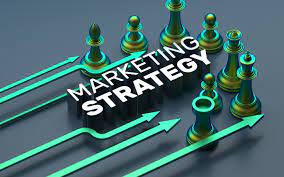As businesses step into 2024, the competitive landscape continues to evolve. The traditional marketing playbook is no longer sufficient, and innovative strategies are needed to captivate modern audiences and boost sales. Whether you’re in e-commerce, real estate, or catering, such as Gourmaze, staying ahead of the curve requires a blend of data-driven decisions, personalized customer experiences, and the smart use of emerging technologies. Below are key strategies to boost sales in 2024, relevant for both B2B and B2C companies.
1. Leverage Data-Driven Marketing
In 2024, data is more accessible and abundant than ever before. From customer behavior patterns to engagement metrics, businesses have an immense pool of data to tap into. This data is instrumental in understanding your customers’ needs, preferences, and buying behavior.
How to implement it:
- Customer Segmentation: Use analytics tools to segment your customers based on demographics, buying habits, and preferences. Tailor your marketing campaigns for each segment, increasing the relevance of your messages and boosting engagement rates.
- Predictive Analytics: Predictive models can help anticipate customer behavior, making it easier to identify when and how to reach out to them with personalized offers. For example, knowing when customers are likely to purchase allows for well-timed promotions or reminders.
2. Embrace AI and Automation
Artificial Intelligence (AI) has moved from a buzzword to a must-have in modern marketing strategies. In 2024, the focus is on automating processes that improve customer experience and reduce operational costs. AI tools can personalize marketing campaigns, automate customer interactions, and analyze data at speeds humans can’t match.
Key applications include:
- Chatbots: AI-powered chatbots can handle customer service inquiries, recommend products, and guide potential buyers through your website, all in real-time. This leads to a more engaging user experience and improved conversion rates.
- Email Marketing Automation: Automated email sequences that trigger based on customer actions can keep leads engaged. For example, abandoned cart emails or follow-up emails after a purchase can drive repeat sales.
3. Personalization at Scale
In an era of information overload, personalized marketing stands out. Consumers expect brands to understand their needs, preferences, and pain points. A generic, one-size-fits-all approach is unlikely to generate significant results. The more you personalize your marketing, the more likely customers are to engage and convert.
How to make it work:
- Dynamic Content: Tailor your website’s content based on user data, such as location, browsing behavior, or purchase history. For example, showing a returning customer products based on their previous purchases can increase the chances of a sale.
- Personalized Offers: Send personalized discount codes, product recommendations, or special offers based on a customer’s browsing or purchasing habits. Tools like machine learning can help generate these recommendations at scale.
4. Interactive and Immersive Experiences
As attention spans shrink, businesses must look for ways to create engaging and memorable experiences. In 2024, consumers expect more than passive marketing; they want to participate and interact with your brand. This is where immersive technologies such as Augmented Reality (AR) and Virtual Reality (VR) come into play.
Implement immersive experiences:
- Augmented Reality for Shopping: AR lets customers visualize products in their environment before buying. This is particularly useful for industries like fashion, home decor, or even food services. Offering an AR feature can boost confidence in a purchase, reducing return rates and increasing sales.
- Interactive Social Media Campaigns: Create engaging campaigns on platforms like Instagram, TikTok, or YouTube that encourage user participation. These could include contests, challenges, or interactive stories that lead users to your website or e-commerce store.
5. Influencer and User-Generated Content Marketing
In 2024, consumers continue to trust recommendations from influencers and their peers over traditional advertising. Collaborating with influencers and leveraging user-generated content (UGC) builds credibility, drives engagement, and ultimately boosts sales.
Best practices:
- Micro-Influencers: Rather than targeting large influencers, focus on micro-influencers who have a smaller but more engaged following. They often have more niche audiences, making them ideal for reaching specific customer segments.
- UGC Campaigns: Encourage your customers to create content around your products or services. This could be reviews, social media posts, or even video testimonials. You can amplify this content on your own marketing channels, making your brand feel more authentic and relatable.
6. Sustainability and Social Responsibility
Consumers, particularly younger generations, are increasingly concerned with the ethical implications of their purchases. A strong focus on sustainability and social responsibility can not only boost brand loyalty but also increase sales.
Tactics to adopt:
- Transparent Practices: Be open about your company’s sustainability efforts, whether it’s sourcing materials responsibly, reducing your carbon footprint, or supporting social causes. Highlight these practices in your marketing campaigns.
- Eco-Friendly Products and Packaging: If applicable, consider offering eco-friendly versions of your products or using sustainable packaging. This can appeal to environmentally-conscious consumers and differentiate you from competitors.
7. Omnichannel Presence
Finally, in 2024, a seamless, omnichannel experience is a must. Customers expect to interact with brands across various platforms—online and offline—without friction. Whether it’s on social media, email, or in-store, your marketing strategy should ensure that every interaction feels cohesive.
How to execute:
- Consistent Branding: Ensure that your branding, messaging, and customer service are consistent across all channels. Whether a customer is interacting with your brand via email, social media, or in-store, they should receive the same quality experience.
- Integrated Marketing Campaigns: Your marketing campaigns should seamlessly flow across different platforms. For instance, a customer could receive an email promoting a product, see a related social media ad, and visit your website to complete the purchase.
Conclusion
As we move through 2024, boosting sales will require businesses to embrace new technologies, provide personalized experiences, and focus on consumer trust. Whether you’re in a catering business like Gourmaze or in any other industry, adopting these strategies can put you on the path to increased revenue and long-term success. By staying agile and customer-focused, your business can thrive in the evolving marketplace.

